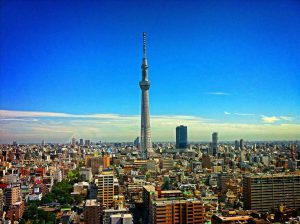Last week marked one month since Japan’s national emergency was lifted. But as the Tokyo metropolitan government moves to ease phase three of coronavirus prevention regulations placed on recreation and entertainment industries, new daily infections rose to 58 in Tokyo, bringing active cases in Japan to 816. It’s the first time since May 25 that Tokyo has added over 50 new infections a day for four consecutive days.
As office workers resume commuting to work, clusters have broken out among employees, with an entire office floor falling ill with the virus in one instance. Newly reopened entertainment venues such as hostess bars in Tokyo’s nightlife district Kabukicho in Shinjuku and neighboring Saitama prefecture have also been traced back as hotspots. On June 15 a cluster of infections was detected at a hostess club after 20 employees tested positive, with the majority being asymptotic. Infections have been widespread among younger generations, in particular people in their 20s followed by people in their 30s.
On June 11 the Tokyo metropolitan government cancelled the controversial “Tokyo Alert” system, which aimed to caution residents of high daily infections and high-risk areas. Tokyo cited a decline in coronavirus infections for the cancellation, but the alert system had been questioned for its effectiveness as a warning mechanism in preventing a second wave. Despite a spike in coronavirus infections similar to March levels, Tokyo Governor Yuriko Koike said according to expert opinion there was no indication of a second wave, as the majority of cases could be tracked to allow cluster testing thereby preventing further spread.
The upcoming Tokyo gubernatorial election on July 5 has put coronavirus countermeasures at the center of candidates’ policies, drawing attention to the confusion surrounding the issuing and cancellation of the metropolitan government’s alert system. Tokyo locals have been left to navigate dangerous waters and exercise self-caution with the Tokyo metropolitan government pushing for a shift from “self-restraint” to “self- defense.”
Some locals questioned the meaning of the alert system and its numerical criteria due to the fact that infections have not decreased since its cancellation. According to the policy, a key criteria for canceling a coronavirus alert is a daily average of no more than 20 cases a day, but June’s daily average reached 29.57. Another conditions is the percentage of unknown infection routes being less than 50 percent. Currently, 44 percent of new positive cases cannot trace the route of infection, causing some experts to worry about community acquired infection. Last Thursday, Koike emphasized the percentage of cases with unknown origin is still below the standard. The spike in infections comes two weeks after the alert was cancelled and coincides with the coronavirus’ two week incubation period, indicating infections took place under the alert system.
Koike stressed that the current situation facing Tokyo is different than March and April, namely due to the medical system in Tokyo being “sufficiently prepared.” As of June 25, 1,000 inpatient hospital beds have been designated for coronavirus, of which 100 beds are secured for severely ill patients. The Ministry of Health has ramped up its coronavirus testing capacity to approximately 450,000 per week compared to 10,000 per week during the initial outbreak during March. Cluster trace testing now covers anyone who has come into contact with an infected person, regardless of the presence of symptoms.
Chief Cabinet Secretary Yoshihide Suga indicated that the government will not resort to enacting a state of emergency for a second time. Minister for Economic Recovery Yasutoshi Nishimura added the government’s shift toward economic recovery would not change at this stage. Since the national emergency was lifted, restaurants and bars are operating under shortened business hours. Coronavirus regulations were lifted for all industries on June 19, excluding some large-scale sports tournaments, which took place without spectators. But business owners have lamented that economic recovery in the capital is an uphill battle with alerts deterring customers and destabilizing business efforts. Currently a new alternative to the alert system is being reviewed.

































